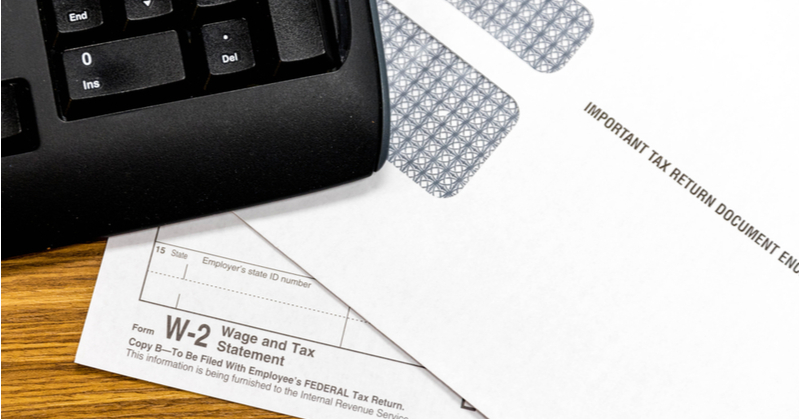It’s almost time for year-end tax filings and the rush of getting your clients’ paperwork in order so they’re ready to file. But, there are some changes to Form W-2 for the tax year 2021, so it’s time to familiarize yourself with those changes now. What do you and your clients need to know about Forms W-2? Let’s get started.
Your 2021 Form W-2 questions answered
Most boxes on an employee’s Form W-2 remain unchanged from previous years. But, other boxes include some important changes due to legislation passed during the pandemic.
Because of the tax changes the federal government passed with different COVID-19 legislation, you might have a lot of questions about Forms W-2 and W-3 for 2021.
The three main COVID-19 relief plans include:
- Families First Coronavirus Relief Act (FFCRA)
- Coronavirus Aid, Relief, and Economic Security (CARES) Act
- American Rescue Plan (ARP)
The plans include COVID-specific paid sick and family leave and deferred Social Security taxes for employees, which makes Form W-2 reporting more complicated than in years past. Check out the answers to some of the most frequently asked questions about Form W-2 reporting for 2021.
1. What information do employers need to report on Form W-2?
When it comes to reporting an employee’s wages, taxes, and personal information, not much has changed for tax year 2021 Form W-2.
Provide the following employer information:
- Employer Identification Number (EIN)
- Employer’s name, address, and ZIP code
- Control number, if applicable*
- Employer’s state tax ID number
If your firm uses control numbers to identify individual Forms W-2 for each employee, include the control number in Box D. Leave the box blank if your firm does not use control numbers.
Provide the following employee information:
- Social Security number
- First name, middle initial, last name
- Address and ZIP code
- Wages, tips, and other compensation
- Social Security wages
- Federal income tax withheld
2. Why are W-2 Box 1 earnings less than Box 3 and Box 5 earnings?
As a tax professional, your client may ask you why Box 1 wages differ from the wages reported in Boxes 3 and 5. The reasons why Box 1 wages may differ from Boxes 3 and 5 vary.
Box 1 shows wages for federal income tax (FIT). Box 3 shows wages for Social Security wages, and Box 5 shows Medicare wages.
Generally, Box 1 earnings are less than the earnings in Boxes 3 or 5 because of specific deductions employees have. Pre-tax deductions reduce an employee’s taxable income, but not all pre-tax deductions are the same.
For example, a 401(k) deduction reduces the amount of taxable wages for federal income tax only. The employee must still pay Social Security and Medicare taxes on the full amount of their wages.
Say an employee earns $35,000 per year and contributes $5,000 to their 401(k). Box 1 wages reflect $30,000 ($35,000 - $5,000) because the $5,000 contribution is not subject to federal income tax. However, Boxes 3 and 5 show $35,000 because the 401(k) does not reduce the taxable wages for Social Security and Medicare taxes.
Other examples of pre-tax deductions that are still subject to Social Security and Medicare taxes include:
- Individual retirement accounts
- Safe harbor accounts
- SIMPLE 401(k)s
- 403(b) accounts
- Group-term life insurance that exceeds $50,000
If you use payroll software for your clients, you may see taxable wages for FIT, Social Security, and Medicare taxes listed in the payroll register for each employee. Compare these taxable wages to Forms W-2 to ensure that the forms are accurate.
3. When should employers start preparing W-2s?
Employers must distribute Forms W-2 to all employees who worked for them during the 2021 tax year by January 31, 2022. But, when should employers begin preparing the tax forms to ensure they can distribute them to their employees on time?
Employers can begin preparing Forms W-2 following the last payroll of the tax year.
If your firm uses payroll software to prepare Forms W-2 for your clients, your provider may not release the updated forms until after January 1. Check with your provider before the tax year ends to determine when the provider will release Forms W-2 and allow you to download and print the required documents.
Review all Forms W-2 for accuracy before sending them to your clients to distribute to their employees. And, have your clients review the forms before they send the forms, too.
4. How should employers report Social Security deferrals from 2020 as repayments in 2021?
Employees who deferred Social Security tax payments in 2020 are responsible for paying back the deferred wages between January 1, 2021 and December 31, 2021.
Employers reported the deferred payments in 2020 by including the total amount of Social Security wages in Box 3 and/or Box 7 of Form W-2. However, because employers did not withhold Social Security tax on these wages, they did not include the amount in Box 4 on the 2020 tax year Form W-2. In addition, employers should not include repayments of deferred Social Security taxes in Box 4 of the 2021 Form W-2.
To report the repayments of Social Security taxes for the tax year 2020, create a Form W-2c, Corrected Wage and Tax Statement. Then, in Box C, enter tax year 2020. Finally, use Box 4 to adjust the total amount of Social Security tax withheld to include the deferred payments.
According to the IRS, file Form W-2c as soon as your client finishes withholding the deferred taxes in 2021.
Issue Forms W-2c to all applicable employees. And, file all applicable Forms W-2c to the Social Security Administration with Form W-3c, Transmittal of Corrected Wage and Tax Statements.
5. What do employers need to do about COVID leave on Form W-2?
In 2020, reporting COVID-19 paid leave wages was a little less complicated. But in 2021, you must report additional information about the COVID-19 paid leave an employee took during the year.
In Box 14 of each applicable employee’s Form W-2, list the:
- Type of paid sick leave
- Timeframe for when the employee took paid sick leave
- Total amount of paid COVID wages for the period during which the employee was off work
If an employee took COVID leave more than once during the applicable periods, you must list each instance of COVID leave in Box 14. You may use an additional separate statement to provide details of the paid sick leave to the employee.
.png?width=150&height=63&name=TWRlogo-regmark_blueblack%20(1).png)
.png)










Do you have questions about this article? Email us and let us know > info@woodard.com
Comments: